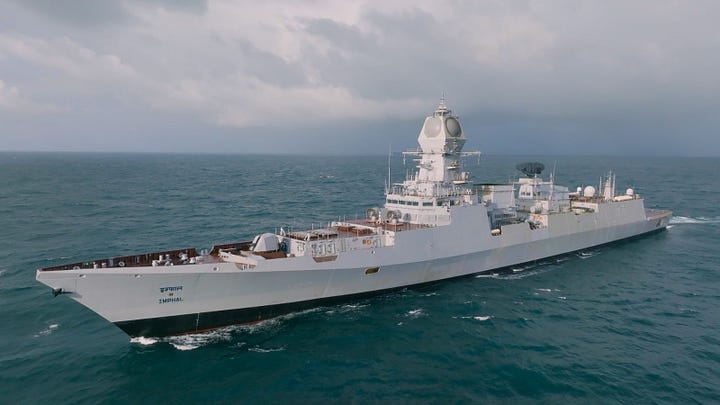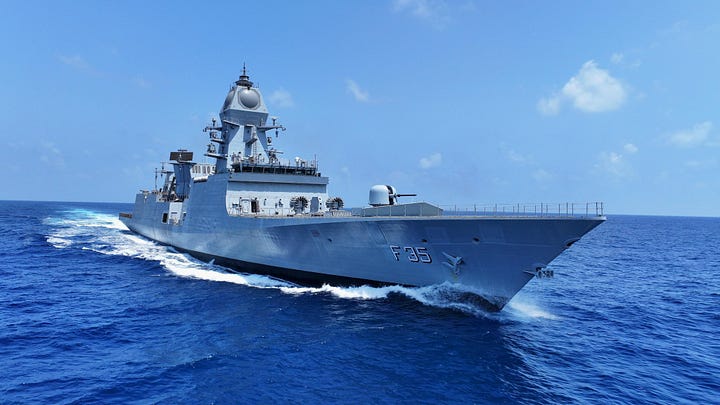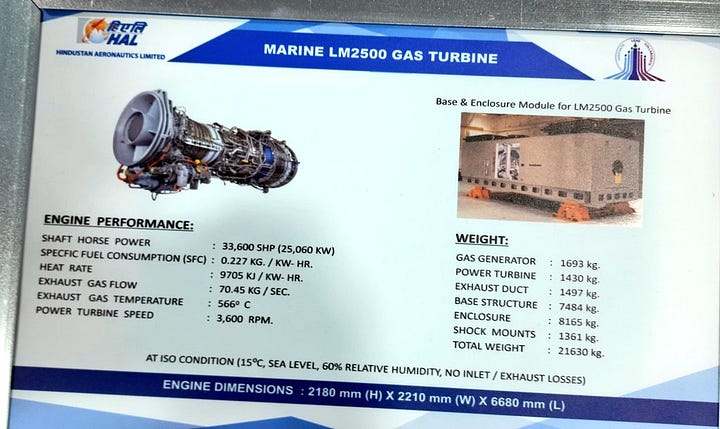Note: The following text was originally posted on my X/Twitter account.
Naval shipbuilding has long been something of a rare success story for India's longstanding efforts toward developing a more self-reliant military industry. Even so, India's naval shipyards remain highly reliant on imports of—or at least the licensed production or assembly of—a wide range of critically important components of foreign origin. This includes the propulsion systems—marine diesel engines and marine gas turbines—that differentiate a barge-like unpowered hull and a sea-going ship.




While much can be said of the peculiarities of recent Indian approaches to warship design and the Indian Navy's approach to fleeting planning more generally, for the present purposes, it suffices to say that Indian naval shipbuilding is heavily reliant on a steady supply of marine gas turbines that India does not itself manufacture. India's Nilgiri-class frigates have a combined diesel and gas (CODAG) propulsion system that pairs two marine diesel engines of German origin (MAN) with two marine gas turbines of American Origin (GE), both of which are assembled under licence in India. The Indian Navy's Visakhapatnam-class destroyers have a combined gas and gas (COGAG) propulsion system that uses two marine gas turbines of Ukrainian manufacture (Zorya-Mashproekt).
The supply of the Ukrainian-built marine gas turbines—which are manufactured in the southern Ukrainian city of Mykolaiv at a facility that is located some 60 kilometers northwest of the Ukrainian city of Kherson and Russian forces on the other side of the Dnieper River—has been in question since February 2022. Continued reliance on the very popular General Electric LM2500 marine gas turbine design, the components of which are built in the United States but assembled under license in India to meet the Indian Navy's localization requirements, binds India's shipbuilding plans to the United States. While India's has longstanding ambitions to develop a more self-reliant military industry, the recent supply shock concerning Ukrainian-built marine gas turbines and increasing recognition that reliance on the United States can come at the cost of New Delhi's much valued "strategic autonomy" have likely led Indian decisionmakers to redouble their efforts to wean India off its reliance on imported marine gas turbines (whether imported in whole or as in form of components that are assembled under licence in India).
Recent reports indicate that India has put into motion a project that is intended to result in Indian-built marine gas turbines with a target power output in the 24-28 megawatt range. Such an Indian built marine gas turbine will facilitate a major advance in India's longstanding pursuit of a more self-reliant naval shipbuilding industry. Time will tell whether India can develop the means to align with such ambitious ends and, more importantly, whether India can design, test, and manufacture indigenous marine gas turbines in a timeframe that will allow India to keep up with a fast-evolving naval balance in the Indo-Pacific.

